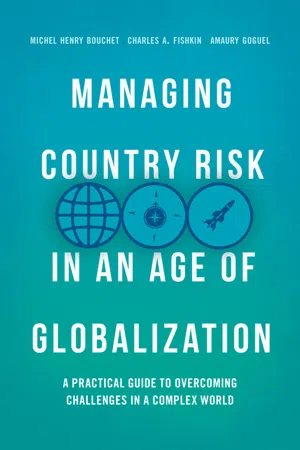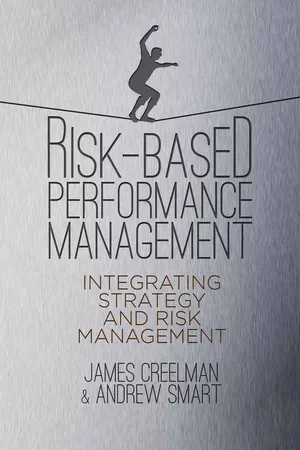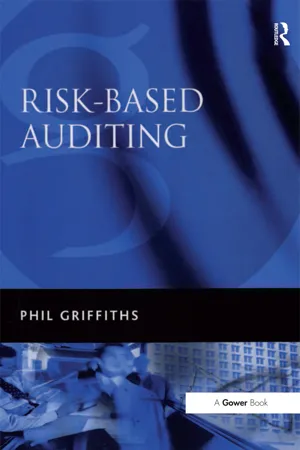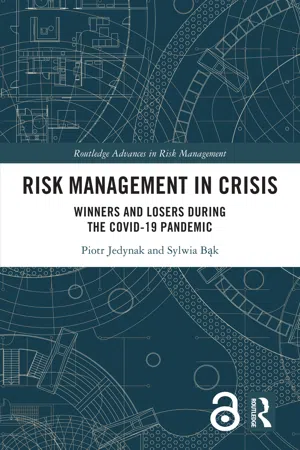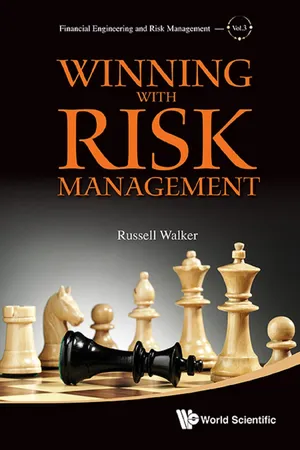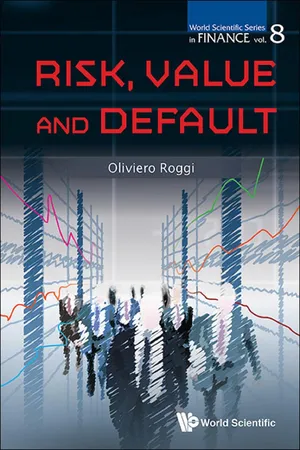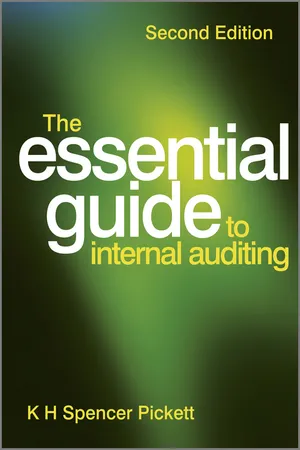Business
Risk
Risk refers to the potential for loss or harm when pursuing a business opportunity. It encompasses various factors such as financial uncertainty, market volatility, and unforeseen events that could impact the success of a business venture. Managing risk involves identifying, assessing, and mitigating potential threats to minimize their impact on the organization's objectives and performance.
Written by Perlego with AI-assistance
Related key terms
12 Key excerpts on "Risk"
- eBook - ePub
Making the Compelling Business Case
Decision-Making Techniques for Successful Business Growth
- W. Messner(Author)
- 2013(Publication Date)
- Palgrave Macmillan(Publisher)
4 And while some of our exposure to Risk may not be completely voluntary, humans as well as businesses seek out some Risks on their very own. And yet there is little consensus among academics and practitioners alike about how to define Risk.Figure 6.1 Fortuna, the Roman goddess of randomness6.1 DEFINITION OF Risk
In business and investing, Risk has traditionally been viewed negatively. Every investment has the potential for Risk and because investments deal with relatively long timescales and involve a lot of money, a lot of things can go wrong between taking the investment decision and reaping the benefits.Hazards are things that can go wrong and cause harm to the investment project. For example, the unit cost of production could be more than the forecast, competitors could enter the market with a superior product, bringing down your company’s own sales figures, or currency fluctuations in global markets could reduce your margins. For each hazard, the business case needs to be clear about what part of the investment and also what part of the business case calculation might be harmed; this will help to identify the best way of managing Risk.Risk is the chance, high or low, that the investment project could be harmed by a hazard, together with an indication of how serious the harm could be.6 Risk arises where the future is unclear and where a range of possible future outcomes exist. Sometimes a distinction is made between Risk and uncertainty . Risk is seen as something quantifiable and objective, while uncertainty is unmeasurable and subjective.7 For investment decisions, this distinction is not particularly useful, as business managers are obviously affected by all kinds of uncertainty whether measurable or not. Thus both words are used interchangeably in this book.As companies and their shareholders run the danger of losing money due to Risk or uncertainty, most business executives focus exclusively on hedging or mitigating Risks. And thus assessing Risk has become a vital aspect of making the business case. Basically, it allows us to establish whether an investment entails more Risk than the organization can reasonably bear. - eBook - ePub
Managing Country Risk in an Age of Globalization
A Practical Guide to Overcoming Challenges in a Complex World
- Michel Henry Bouchet, Charles A. Fishkin, Amaury Goguel(Authors)
- 2018(Publication Date)
- Palgrave Macmillan(Publisher)
2017 ).United States Department of Commerce , National Institute of Standards and Technology (NIST) :- Risk is a “measure of the extent to which an entity is threatened by a potential circumstance or event, and typically a function of: (i) the adverse impacts that would arise if the circumstances or event occurs; and (ii) the likelihood of occurrence” (National Institute of Standards and Technology 2014 ).
- Risk Management is the “process of identifying, assessing, and responding to Risk .”
Financial Reporting Council (United Kingdom ): “Principal Risk is a Risk or combination of Risks that can seriously affect the performance, future prospects or reputation of the entity. These should include those Risks that would threaten its business model, future performance, solvency or liquidity” (Financial Reporting Council 2014 ).Box 1.2 Frank Knight ’s Legacy: Risk , Uncertainty , and Ambiguity
Our understanding of Risk and uncertainty continues to be influenced by the thinking of Frank H. Knight (1885–1972), a founding member of the Chicago School of Economics at the University of Chicago .In 1921, Knight publishedRisk,UncertaintyandProfit(Knight 1921 ). He distinguished between Risk and uncertainty , where Risk was limited to measurable or known probabilities and uncertainty referred to a wide range of outcomes that could not be known in advance and accordingly not effectively measured. This distinction has important implications for the practice of Risk management . It reminds us that there are different degrees of Risk and uncertainty that should be managed in different ways. It further reminds us that even if we can measure some Risks effectively, we must acknowledge the potential for surprises. We learned this from the Global Financial Crisis - eBook - ePub
Risk-Based Performance Management
Integrating Strategy and Risk Management
- A. Smart, J. Creelman(Authors)
- 2013(Publication Date)
- Palgrave Macmillan(Publisher)
Although very useful – and the reason why the ISO31000 standard is a key foundation of our RBPM approach – the IS03100 definitions excluded any mention of Risk appetite (an odd omission, as we have stated elsewhere). For Risk management in particular, we believe this leads to an incomplete description.Defining Risk The ISO standard also provided a useful definition of Risk: “the effect of uncertainty on objectives”. An effect was further clarified as “a deviation from the expected positive and/or negative”. The notes to the ISO3100 standard further explained the meaning of the words used within the Risk definition.Objectives can have different aspects (such as financial, health and safety, and environmental goals)[Risk c]an apply at different levels (such as strategic, organization-wide, project, product and process)[Risk i]s often characterized by reference to potential event and consequences, or a combination of these[Risk i]s often expressed in terms of a combination of the consequences of an event (including changes in circumstances) and the associated likelihood of occurrenceUncertainty is the state, even partial, of deficiency of information related to understanding or knowledge of an event, its consequence, or likelihood.8ISO’s focus on uncertainty is worthy of further analysis. The fact is that the purest definition of Risk is actually the “threat” side of how we (and many others) use the term. The Oxford Dictionary, for instance, defines Risk as “a situation involving exposure to danger”.9 - eBook - ePub
- Phil Griffiths(Author)
- 2016(Publication Date)
- Routledge(Publisher)
CHAPTER 2 The Need to Understand RiskApproaches to Risk management
To truly embrace Risk-based audit it is necessary to consider the meaning of Risk. This is a term which is very widely used but often misunderstood.Definitions
The first definition I offer was developed by the Economist Intelligence Unit, a UK government department: The threat that an action or event will adversely affect an organisation’s ability to achieve its objectives and execute its strategies successfully. This definition highlights a number of key factors: 1 A Risk is invariably a threat – something that might happen. 2 The threat relates to an event – something that has to occur for the Risk to crystallise. 3 The event, if it occurs, will impact on achievement of business objectives.The one aspect of the definition which I dislike is the word ‘adversely’. Risk does not necessarily impact objectives in a negative way, it can be positive. It is for this reason that I prefer the definition that comes from the Australia/New Zealand Risk Standard, the only internationally recognised standard relating to Risk management. The definition in this standard is:The chance of something happening that will have an effect on business objectives.In addition to the benefit of being a simple and readily understood definition, the word ‘chance’ is a very good one as chance can be positive or negative. This is a very good way of being able to define Risk.Another good explanation particularly looking from an Internal Audit point of view is that Risk can be seen as the pulse of the organisation. This is a very good analogy, and auditors, to continue the analogy, are there to take the pulse. You need to ensure that your organisation embraces the issue of Risk, managing rather than simply tolerating the threats and, therefore, missing the opportunities. I firmly believe that Risk management should be considered a positive process, Risk is not just what can go wrong, it is better to think of the things you have got to get right. You can (and should) help to provide management with the required assurance that the Risks are being managed effectively. - eBook - ePub
Risk Management in Crisis
Winners and Losers during the COVID-19 Pandemic
- Piotr Jedynak, Sylwia Bąk(Authors)
- 2021(Publication Date)
- Routledge(Publisher)
Risk in itself is regarded as a universal concept, applicable in both science and all dimensions of business life: economic, social and political (Śliwiński, 2002). Similarly to the case of uncertainty, the ways in which Risk is defined in the scientific literature are characterized by great diversity, which can be justified by the number and diversity of scientific disciplines on the basis of which Risk is interpreted and attempts at its operationalization are made (Spekman and Davis, 2004; Elahi, 2013). With regard to management sciences, it is possible to indicate attempts to define Risk both conceptually and in the area of sub-disciplines of management science, such as quality management, strategic management or Risk management – a sub-discipline directly dedicated to the role of Risk in business management (Kaczmarek, 2006).The results of the conducted review of the major definitions of Risk, including approaches to Risk definition, are presented in Table 1.2 .Table 1.2 Approaches to defining RiskApproach to defining Definitions With respect to the source of occurrence A situation where at least one of its constituent elements is unknown, but the probability of its occurrence is known (Pasieczny, 1981) The threat of failure to achieve planned profit due to possessing incomplete information (Holscher, 1987) A situation where, in conditions of incomplete information, decisions made are not optimal in terms of the objective pursued (Kreim, 1988) A situation or event where material or human value is endangered and whose outcome is uncertain (Rosa, 1998) With respect to the possibility of achieving established objectives Uncertainty about a specific event under the conditions of two or more possibilities. This is a measurable uncertainty as to whether the intended objective of the action will be achieved (American Risk and Insurance Association, 1966) - eBook - ePub
- Russell Walker(Author)
- 2013(Publication Date)
- WSPC(Publisher)
Unfortunately, there is little we can do about the biases and contamination that impact our outlook other than to constantly and diligently look for new and disconfirming information. Challenging our assumptions and outlook about Risk is not only the most important step in managing Risk, it may be the most difficult because of our biases.Complexity and unpredictabilityAside from contending with one’s biases, business managers must be cognizant of other aspects of Risk, including its complexity in how it impacts the enterprise. We may think of this as the “path of the Risk.” Risks in business are multi-dimensional and may show relationships and interdependencies with other Risks, meaning that the ability to measure a Risk (or understanding its impact on the business) is limited by the information available at a point in time and the ability to comprehend the complexity of the Risk. The complexity of the Risk may overwhelm the ability to predict the outcome, resulting in distaste for the Risk by the business. That which is unknown to the business may be considered a Risk. However, as Knight demonstrated, Risk may be reduced where information and understanding can unravel the uncertainty. In business, uncertainty is common in complex systems. With a movement to greater globalization, interconnectedness, and reliance on automated systems, we can expect greater complexity in business. In many businesses where unraveling the complexity is difficult or impossible, this complexity will be viewed as a Risk. Developing an understanding for the complexity is tied to understanding the path and nature of the Risk, not simply its statistical properties.Opportunity to control or influenceA better understanding of an identified Risk often leads one to think that a Risk can be influenced by certain actions or investments. If the Risk cannot be managed or mitigated, hopefully it can be better understood, allowing for more efficient investments. The ability to bring information to a Risk decision suggests that learning and discovery are at the core of improving a business’ Risk position. The Risk manager, therefore, looks for information to confirm the hypothesized understanding of the Risk and how it is realized in the business. This is the natural approach to identifying the Risk that is most attractive to take. - eBook - ePub
- Oliviero Roggi(Author)
- 2015(Publication Date)
- WSPC(Publisher)
Part 1THE CONCEPT OF Risk AND THE ENTERPRISE Risk MANAGEMENT
Passage contains an image
Chapter 1
THE CORPORATE Risk
Oliviero RoggiDefinition of Risk and Uncertainty for Business Purposes
Every corporation as decision maker is naturally subjected to uncertainty and Risk of future events. To date, neither logical reasoning nor esotericism has been able to eliminate uncertainty regarding the future. Scholars and practitioners have developed sophisticated models for simulating the future, but none of them have been able to eliminate the uncertainty that is intrinsic in the human condition.Because uncertainty and Risk are the central concepts of this book, there is a need to provide logical and epistemological boundaries of the above mentioned concepts.Currently, as we will see in this chapter, there is no consensus for a formal definition of Risk that includes the complexities of the concept. As such, there is no agreement on the relationship between the concept of Risk and uncertainty. Finance scholars from different schools, who are interested in the Risk phenomenon, have tried to provide a general definition of Risk and uncertainty.Risk and Uncertainty Concepts at Work in Finance
At the beginning of the last century, A. H. Willet in The Economic Theory of Risk and Insurance, tried to give more content to the definition of Risk and uncertainty by illustrating the relationship existing between the two concepts: “Risk and uncertainty are objective and subjective aspects of apparent variability in the course of natural events” (Willet, 1901, p. 24). Furthermore, in trying to offer a better illustration for the difference between the two concepts, he stated“… It seems necessary to define Risk with reference to the degree of uncertainty about the occurrence of a loss, and not with reference to the degree of probability that it will occur”. Risk in this sense is the objective correlative of the subjective uncertainty. It is the uncertainty as embodied in the course of events in external world, of which subjective uncertainty is a more or less faithful interpretation - eBook - ePub
- Tony Merna, Faisal F. Al-Thani(Authors)
- 2011(Publication Date)
- Wiley(Publisher)
Once the probability, cause and effect of an occurrence can be determined then a probability distribution can be computed. From this probability distribution, over a range of possibilities, the chances of Risk occurring can be determined, thus reducing the uncertainty associated with this event.The authors suggest that uncertainty can often be interpreted as prophecy, since a prophecy is not based on data or experience. A prediction, however, is normally based on data or past experience and thus offers a basis for potential Risk.2.3 Risk AND UNCERTAINTY: BASIC CONCEPTS AND GENERAL PRINCIPLES
According to Chapman and Ward (1997):Risk and uncertainty are distinguished by both Bussey (1978) and Merrett and Sykes (1983) as:All projects involve Risk – the zero Risk project is not worth pursuing. Organisations which better understand the nature of these Risks and can manage them more effectively can not only avoid unforeseen disasters but can work with tighter margins and less contingency, freeing resources for other endeavours, and seizing opportunities for advantageous investment which might otherwise be rejected as too Risky.A decision is said to be subject to Risk when there is a range of possible outcomes and when known probabilities can be attached to the outcome .Uncertainty exists when there is more than one possible outcome to a course of action but the probability of each outcome is not known .In today’s business, nearly all decisions are taken purely on a financial consequences basis. Business leaders need to understand and know whether the returns on a project justify taking Risks, and the extent of these consequences (losses) if the Risks do materialise. Investors, on the other hand, need some indication of whether the returns on an investment meet their minimum returns if the investment is fully exposed to the Risks identified. (Merna 2002) suggests: - eBook - ePub
- K. H. Spencer Pickett(Author)
- 2011(Publication Date)
- Wiley(Publisher)
The Risk appetite defines how inherent Risk is perceived and whether there is an aggressive or more passive growth strategy in place. Risk tolerance is what is acceptable after appropriate controls have been put in place to mitigate Risk, through an appropriate Risk management strategy. Deciding on what is appropriate depends on how the business stands on whether Risks need to be contained through more controls or accepted as just about right whether more Risky strategies are in place to exploit opportunities.The concept of Risk appetite is very tricky to get around. The contrasting positions are that the board sets a clear level and tells everyone inside the organization or that people are empowered to derive their own levels based around set accountabilities. These accountabilities mean defined people are responsible for getting things right and also must explain where this has not happened and things are going wrong. HM Treasury (Strategic Risk Management), suggest that:Risk appetite is the amount of Risk to which the organisation is prepared to be exposed before it judges action to be necessary… Risk appetite may be very specific in relation to a particular Risk, or it may be more generic in the sense that the total Risks which an organisation is prepared to accept at any one time will have a limit… Any particular organisation is unlikely to have a single Risk appetite. The tolerable extent of Risk will vary according to the perceived particular Risks The most significant issue is that it is unlikely, except for the most extreme Risk, that any particular Risk will need to be completely and absolutely obviated…. Identification of Risk appetite is a subjective… issue… (para. 6.1).If an organization gets the Risk appetite wrong then key stakeholders may well misunderstand the extent to which their investment is insecure, and, conversely, where corporate Risk tolerance is low, returns on investment may be likewise restrained. Funds will move in accordance with the level of Risk that they are attracted to, so long as this level has been properly communicated to all interested parties as the following case suggests: - eBook - ePub
Project Risks
Actions Around Uncertainty in Urban Planning and Infrastructure Development
- Geneviève Zembri-Mary(Author)
- 2019(Publication Date)
- Wiley-ISTE(Publisher)
3 , has been reinforced since the call for tenders for the design, construction, and even operation of these projects under concession or partnership contract and since the adoption of Act No. 2008-735 of July 28, 2008, on partnership contracts.In project management, Risk is defined as a dangerous event whose causes and consequences are known, and whose frequency, severity, and occurrence can be determined for a potential target (Le Ray 2010). By target, we mean here the development project, whatever its scale, such as an urban renewal operation or a transport project, or the human, natural, heritage, or social environment of the project.The consequences of Risk can be positive and result in new opportunities. For example, an episode of protest may lead to a more consensual solution for the project and make it less likely to generate a Risk of delay during construction. The social, economic, and environmental consequences can also be negative. This is referred to as damage or impact to the project. Protective and preventive measures can be taken to limit or avoid the scope of the Risk.The probability of Risk occurrence depends on the frequency of exposure of the object to this Risk. Severity measurement is used to assess the consequences of Risk. To measure a Risk, its frequency, and severity, it is first necessary to identify the Risk.This boundary between an area of certainty, where it is possible to determine the possible causes and consequences of an event, and an area of uncertainty, where this is impossible, defines Risk, on the one hand, and uncertainty, on the other.In a certainty zone, being able to determine the causes and consequences of an event means that the event is known, has already occurred, and that its origin and impacts have already been identified and accurately analyzed. Knowledge is of great importance here. However, it does not mean absolute certainty. It makes it possible to better determine the context and conditions under which an event occurs, and to imagine with a margin of uncertainty the possible consequences. - eBook - ePub
Quality in the Era of Industry 4.0
Integrating Tradition and Innovation in the Age of Data and AI
- Kai Yang(Author)
- 2023(Publication Date)
- Wiley(Publisher)
Risk Categories: Risks are typically categorized to provide structure to the Risk identification process. Common Risk categories might include strategic Risks, operational Risks, financial Risks, regulatory Risks, technological Risks, environmental Risks, and reputational Risks. The exact categories used will depend on the nature of the organization and its context.- Risk Register: Identified Risks are documented in a Risk register. For each Risk, the register might also include information about its nature, potential causes, potential impacts, Risk owner, and any current Risk responses.
Effective Risk identification requires a systematic approach and a proactive mindset. It is also an ongoing process, as new Risks can emerge over time due to changes in the organization's internal or external environment. It is worth noting that while the focus is often on identifying negative Risks (threats), it is also important to identify positive Risks (opportunities) that could benefit the organization.7.3.1.2 Risk Analysis
Risk Analysis is to evaluate the likelihood and impact of the identified Risks. It is the process that comes after Risk identification in the Risk management process. It involves comprehending the nature of the Risk, the level of Risk, and determining appropriate management strategies. This process is vital as it provides a way for organizations to prioritize Risks based on their potential impact and likelihood.Risk analysis can be broken down into the following components:- Risk Evaluation:
This involves understanding the Risk in terms of its potential impact and the likelihood of occurrence.
- Impact Assessment: Evaluating the potential impact involves understanding the possible consequences if the Risk were to materialize. Impacts could be financial, reputational, operational, or strategic, among others. Impact can be assessed qualitatively (low, medium, high) or quantitatively (in terms of financial loss, time delay, etc.).
- Likelihood Assessment: This involves estimating the probability of the Risk event occurring. It can be based on historical data, predictive models, expert judgment, or a combination of these.
- Risk Quantification: For some types of Risks, it is possible to quantify the Risk in terms of monetary value. This is often done using techniques like:
- eBook - ePub
Risk Governance
Biases, Blind Spots and Bonuses
- Elizabeth Sheedy(Author)
- 2021(Publication Date)
- Routledge(Publisher)
- Context: what are the important contextual factors, both internal and external? External context might include regulatory, competitive, technological, economic, legal and societal factors. Internal context could take account of resources, strategic objectives, organisational history and culture etc.
- Criteria: here we define the Risk criteria that will be monitored to evaluate the significance of Risk and guide decisions. The criteria must reflect the organisation’s objectives and resources, as well as obligations to stakeholders. In organisations where the safety of employees and customers is a concern, criteria could include the rate of fatal and serious accidents. For a company with debt covenants based on the level of earnings, earnings per quarter would be a sensible Risk criterion since a breach could lead to foreclosure.
ISO31000 does not specifically mention the term ‘Risk appetite’, but its importance is implied. An understanding of organisational context provides an understanding of how much Risk the organisation is willing to take, on key Risk criteria, in order to achieve its objectives.5.3 Risk assessmentRisk assessment includes three sub-processes: identification, analysis and evaluation. The first step, identification, is the simplest; the focus here is simply on recognising and describing Risks to create a Risk register. A potential challenge here is to identify emerging Risks before they become serious.Risk analysis involves detailed, often quantitative consideration of possible outcomes, including likelihood and impact. This is arguably the most difficult step in the entire Risk management process, with flawed analysis leading to disastrous decisions in subsequent stages. Good Risk analysis is a potential defence against biases such as overconfidence and the availability bias but is itself exposed to biases and blind spots.Risk evaluation is the final step of the assessment process leading up to the treatment decision. We review the results of the analysis and consider the likely impact of Risk on the Risk criteria. This evaluation might prompt additional analysis or consideration of possible treatments and their effectiveness, having regard for cost. It might also prompt further discussion of objectives.
Index pages curate the most relevant extracts from our library of academic textbooks. They’ve been created using an in-house natural language model (NLM), each adding context and meaning to key research topics.

